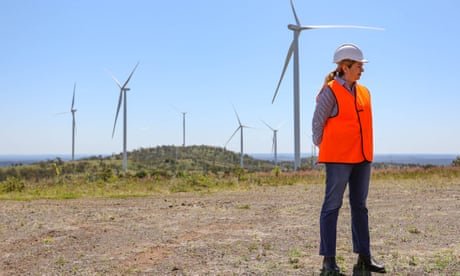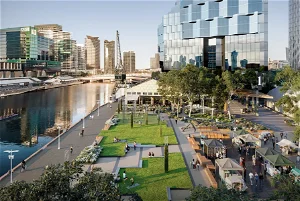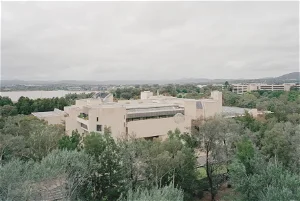The announcement was always going to come one day - the climate crisis, the spiralling electricity costs and the gale-force winds of change in international markets had made it inevitable. But Annastacia Palaszczuk's words were still met with amazement.
By 2035, the Queensland premier said, the state would no longer rely on coal for electricity.
A chart laid out how the coal-burning, coalmining state would end its long association. By 2037, the chart showed, coal will be gone entirely from the state's electricity supply.
Energy policy wonks were aghast. There is more detail to come, and many major hurdles to leap, but the feeling of change in the Sunshine State was palpable.
"What was impressive was that they are the first state to really articulate a proper pathway out of coal," says Alison Reeve, an energy and climate expert at the Grattan Institute.
"I was a bit gobsmacked, particularly because they'll be going from one of the most emissions intensive electricity supplies, to one of the least."
The 10-year, $69bn energy plan came in the middle of a huge week in Australian energy.
On Monday, Queensland announced it was investing $774m to build the country's biggest publicly owned windfarm. On Tuesday, Victoria revealed that by 2035, it wanted enough renewable energy storage to power half the state's homes.
On Thursday, AGL said it would close the country's most polluting power station, Victoria's Loy Yang A, in 2035, a decade earlier than planned.
"There is a level of inevitability to all this," says Reeve. "Because we have spent a decade and a half stuffing around, you do now have to go harder and faster."
Queensland's coal announcement on Wednesday came with new targets for renewable electricity: 70% by 2032 and 80% by 2035.
By 2040 more than a third of the state's power will come from wind, with solar power the next biggest contributor.
Batteries and two large hydroelectric plants - one in the north near Mackay and one west of the Sunshine Coast - will store the renewable power so it can balance the energy supply.
The larger Mackay project, which Palaszczuk dubbed "the battery of the north", only exists on paper and the government is still looking at other potential locations.
But the coal exit still took many by surprise. Only a few months ago the state's energy minister, Mick de Brenni, said none of the eight state-owned coal power stations would close. In hindsight, it was a carefully worded declaration.
Under the plan, power stations become clean energy hubs for hydrogen, renewables and electricity infrastructure. Parts of the coal plants could be repurposed as huge spinning motors that help balance demand and supply in electricity grids.
All this, Reeve said, meant Queensland could say "the power stations aren't closed, but it just won't need coal any more".
"Queensland is seeing an increasing frequency and severity of natural disasters," de Brenni told the Guardian. "Boardrooms and consumers are asking governments to take real action."
There was no announcement on Queensland's emissions reduction targets for 2030, which - at a 30% cut from 2005 levels - are the weakest of any state. And while much of the global climate impact from the state comes when its large volumes of coal and gas are exported and burned overseas, the energy plan does nothing on this front.
But the latest figures for 2020 show the state's emissions at 159m tonnes - the same level they were four years earlier, and a 19% drop on 2005 levels.
Were it not for a sharp fall in emissions from land clearing, which went from 71Mt in 2005 to 12Mt in 2020, emissions would be rising.
About a third of the state's emissions, some 49Mt, relate to electricity production. That is a fraction higher than in 2005.
Emissions have also climbed in the LNG sector after huge export facilities opened up in the state's north, burning large amounts of gas in the process. The LNG export industry is the country's biggest user of gas.
De Brenni says achieving the state's current 2030 target would mean cutting emissions in the electricity sector by 41%.
He says the targets were "continuing work for our government", and that the new energy plan is "the first and most significant step we have taken to drive real action".
"The nation can't achieve 43% (the federal government's 2030 emissions reduction target) without Queensland delivering this plan," he says.
For years, the coal industry has claimed the fuel will still be viable in a carbon-constrained world because the carbon emissions will be able to be captured and stored. But Queensland's energy plan has no mention of carbon capture and storage (CCS).
Earlier this year, the Australian Energy Market Operator released its plan for the most optimal and reliable electricity market in the future to meet climate targets.
The investment outlined in Queensland, which will result in eight times the renewable energy capacity of today by 2035 if all goes to plan, is exactly in line with Aemo's expectations.
"What an amazing week," said Simon Holmes a Court, an energy analyst and investor whose Climate 200 project helped fund the campaigns of six new climate-focused independent MPs elected to federal parliament in May.
Dr Amanda Cahill is the chief executive and founder of The Next Economy, a not-for-profit specialising in economic development that has run scores of climate and energy workshops and summits around Australia and, in particular, in central Queensland
"We're at a turning point in the energy system," she says. "We've talked about the need to move away from fossil fuels for a long time. This is the tipping point."
Despite perceptions from outside Queensland, big industry and public officials have been crying out for a decarbonisation plan but have, until recently, avoided going public because of the divisive nature of climate policy.
Prof John Quiggin, an economist at the University of Queensland and a former member of the federal government's Climate Change Authority, says because Queensland retained public ownership of its coal plants, it was able to plot an orderly transition in a way other states couldn't. The plan includes a "jobs guarantee" signed with three unions to give coal plant workers security.
"It becomes very straightforward to have a jobs guarantee if you own the business. It's harder if you are dealing with private companies," he says.
"This is a big, big deal. It is radical change in all sorts of ways from where we were even just a few years ago. I didn't expect it from this Labor government. They seem to have got brave."
























